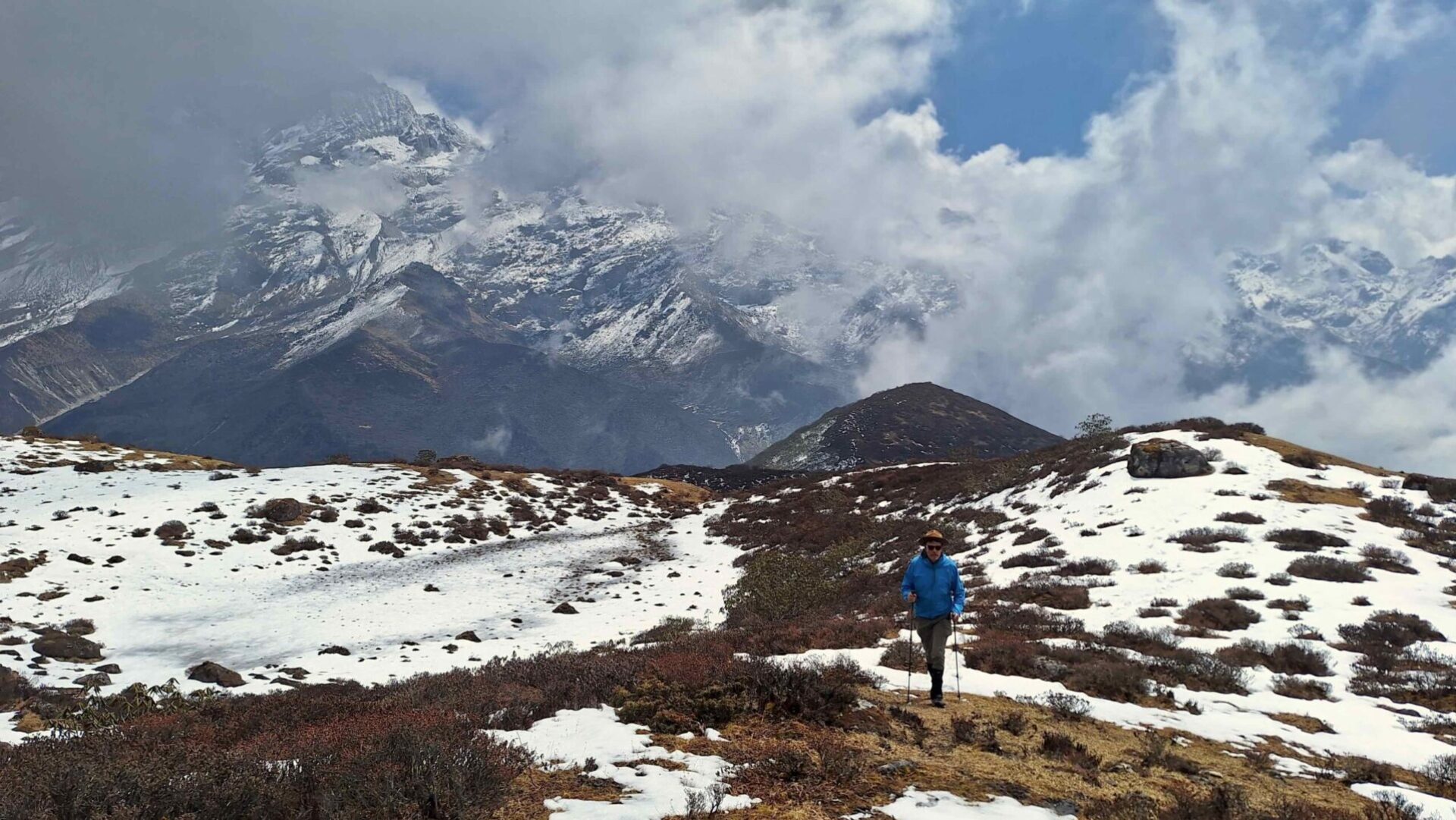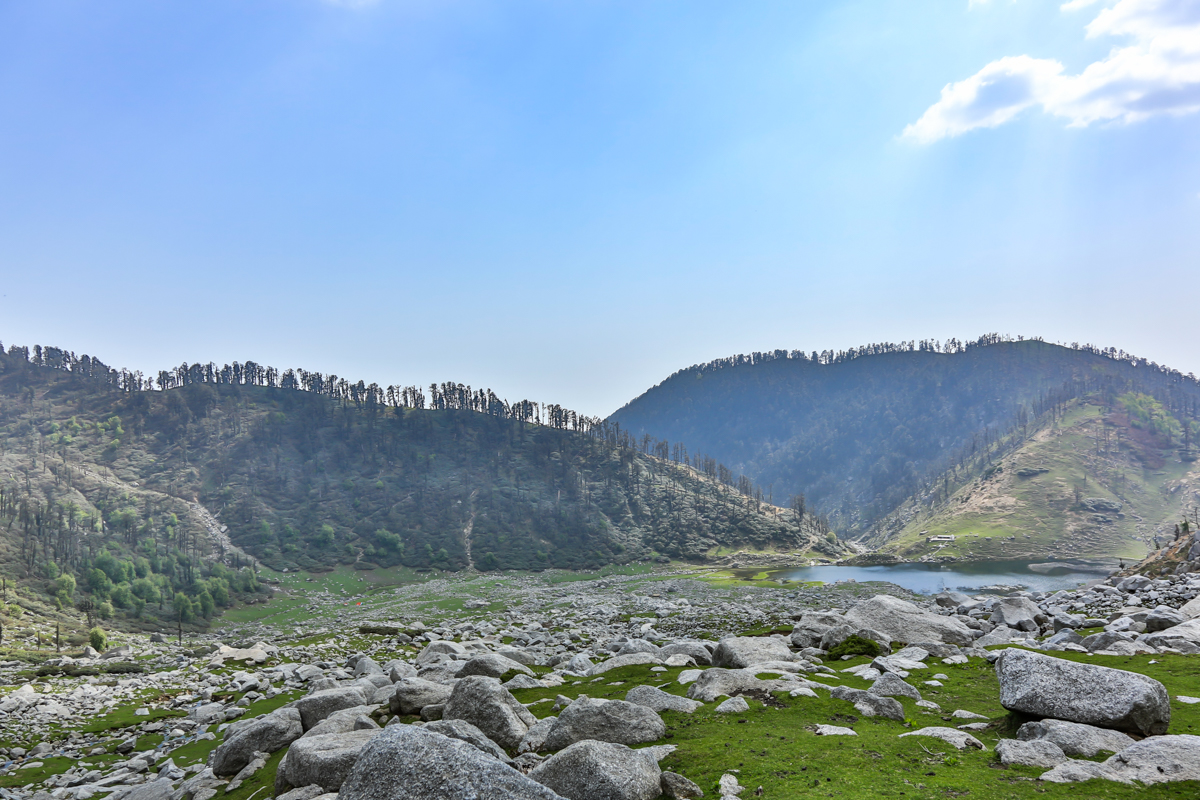The next morning, we started walking towards Kareri lake. The trail continued to follow the Niyund upstream on its left bank and the ascent was gentle. From time to time the stream flowed through natural pools which looked very inviting for a dip. We kept away though as the water was quite cold!
About a couple of hours the vegetation began to thin out and the valley opened up gloriously. The Kareri lake was just below us. Set against the Minkiani peak, the lake’s perimeter is more than a kilometre. The lake was covered with algae, and we were told that this is common in the post-monsoon season. Huge boulders surround the lake. On the northern side are large meadows dotted with gujjar kothis (shepherd huts).
The weather had been changing course since we had arrived. We could see that clouds had started coming in from an easterly direction from over the dhauladhars and quickly covered the sky above the lake. We hurried to set up camp and lit a fire in one of the open stone huts, anticipating a downpour. Soon after, hail began to fall and within minutes the valley turned into a sheet of white.
This continued for about an hour when suddenly the downpour stopped and the sun started shining through. Within minutes it opened up, leaving behind a spotless blue sky. The setting sun’s last rays fell on the Minkiani peak, leaving us in contemplation of the serious work that lay ahead.


